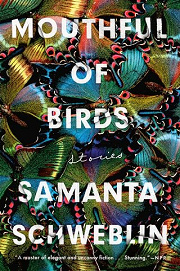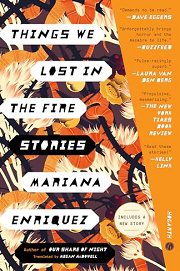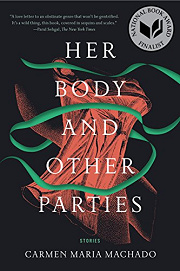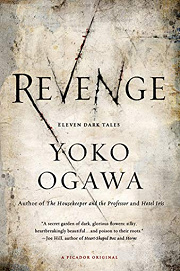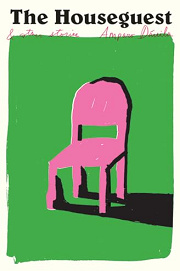Share your thoughts in a quick Shelf Talk!
Mouthful of Birds by Samanta Schweblin
Reality splinters in stories where desire, dread, and the uncanny press against the everyday until it cracks. Unsettling and luminous, Mouthful of Birds invites you into a world where the familiar is the first thing to vanish.
Have you read this book? Share what you liked (or didn’t), and we’ll use your answers to recommend your next favorite read!
Love Mouthful of Birds but not sure what to read next?
These picks are popular with readers who enjoyed this book. Complete a quick Shelf Talk to get recommendations made just for you! Warning: possible spoilers for Mouthful of Birds below.
In Mouthful of Birds, did you enjoy ...
... Latin American nightmare logic and everyday horrors blooming into the grotesque?
Things We Lost in the Fire by Mariana Enriquez
If the feral, dreamlike menace of stories like “Mouthful of Birds” (the daughter who survives by eating live birds) or “The Merman” (a father hiding a fish-boy in the bathroom) hooked you, you’ll feel right at home in Things We Lost in the Fire. Enriquez turns ordinary streets into occult corridors—kids vanish into a cursed house in “Adela’s House,” a boy’s disappearance in “The Dirty Kid” curdles into urban legend, and ritual fires in the title story echo the eerie communal dread you felt in Schweblin’s most uncanny scenes.
... standalone, razor-sharp fables that tilt from the ordinary into unnerving horror?
Her Body and Other Parties by Carmen Maria Machado
If you liked how each piece in Mouthful of Birds lands like a self-contained spell—think “Headlights,” with the abandoned bride on the roadside, or “The Heavy Suitcase of Benavides,” with its macabre burden—Machado’s collection will sing to you. In Her Body and Other Parties, a thin thread of the everyday snaps and reality warps: lovers haunt a woman’s body, a police procedural blooms into a fever chart, and each story hits with the same self-sufficient, knockout finality as Schweblin’s vignettes.
... spare, elliptical settings that let dread bloom in the negative space?
Revenge by Yoko Ogawa
If the stripped-back scenes in Mouthful of Birds—a rural train stop in “Toward Happy Civilization,” a nondescript apartment that hides the impossible—made the terror feel larger than the page, Ogawa’s Revenge will grip you. Her cool, uncluttered rooms and nameless streets hold unsettling objects (a handbag made of cat fur, a fruit stand with a hidden heart), letting your imagination supply the menace much like Schweblin’s most chilling setups.
... allegorical surrealism where mundane acts warp into existential traps?
Blow-Up and Other Stories by Julio Cortázar
If you were drawn to how Schweblin turns simple premises into symbols—like the bride in “Headlights” becoming a ritual of abandonment, or the husband lugging a suitcase that’s literally his guilt—Cortázar is a kindred master. In “Axolotl,” a man fixates on salamanders until the boundary of self dissolves, and in “Blow-Up,” a casual photograph unfolds into a metaphysical snare—echoing the way Mouthful of Birds smuggles deep allegory into everyday gestures.
... claustrophobic minds unraveling under intangible threats and obsessions?
The Houseguest and Other Stories by Amparo Dávila
If the nervous, interior pressure of Mouthful of Birds—the paranoid waiting room dread in “Toward Happy Civilization,” the suffocating domestic unease of “Butterflies”—stayed with you, Dávila’s stories will burrow even deeper. In “The Houseguest,” an unnamed presence overwhelms a household with anxiety; elsewhere, jealousy and dread metastasize until reality buckles—mirroring Schweblin’s talent for psychological peril that feels both precise and unnameable.
Unlock your personalized book recommendations! Just take a quick Shelf Talk for Mouthful of Birds by Samanta Schweblin. It’s only a few questions and takes less than a minute.
